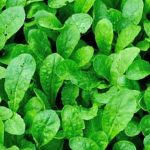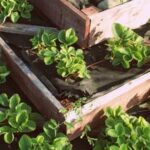Are you interested in starting your own vegetable container garden but not sure where to begin? This Vegetable Container Gardening Guide will provide you with all the information you need to get started.
Whether you have limited outdoor space, poor soil quality, or just want the convenience of growing your own vegetables at home, this guide will help you successfully grow a bountiful container garden. From choosing the right containers to selecting the best vegetables for container gardening, this guide has got you covered.
Container gardening offers numerous benefits for both novice and experienced gardeners. Not only does it allow individuals with limited space to enjoy gardening, but it also provides better control over soil quality and easier maintenance. In addition, it can be a great way to add greenery and fresh produce to your balcony, patio, or any small outdoor area. By following the advice provided in this guide, you can start enjoying the many rewards of vegetable container gardening.
In this section of the guide, we will delve into the basics of vegetable container gardening. You’ll learn about the advantages of growing vegetables in containers, including increased mobility and flexibility in terms of placement and design.
We’ll also discuss how container gardening can be a practical solution for those living in urban areas or apartments where traditional garden beds may not be feasible. Get ready to transform your living space into a thriving oasis of fresh vegetables with our comprehensive vegetable container gardening guide.
Benefits of Vegetable Container Gardening
When it comes to vegetable container gardening, there are numerous benefits that make it an attractive option for both novice and experienced gardeners. One of the primary advantages of container gardening is its flexibility and versatility. Whether you have limited outdoor space, poor soil quality, or mobility issues, container gardening allows you to grow a variety of vegetables in a compact and manageable way.
Another benefit of vegetable container gardening is the ability to control the growing environment more effectively. With containers, you can carefully monitor the soil quality, drainage, and sunlight exposure for each plant, leading to healthier and more productive growth. Additionally, container gardening reduces the risk of weed infestation and minimizes the chance of certain pests and diseases affecting your crops.
Furthermore, vegetable container gardening offers the convenience of easy access to your plants for watering, maintenance, and harvesting. This can be especially appealing for individuals with physical limitations or those who want to avoid excessive bending or kneeling. Additionally, container gardens can be placed strategically on patios, balconies, or other outdoor areas closer to the kitchen, making it more convenient to incorporate homegrown vegetables into your daily meals.
| Advantages | Description |
|---|---|
| Flexibility and Versatility | Ability to grow in limited spaces or poor soil conditions. |
| Controlled Growing Environment | Allows monitoring of soil quality, drainage, sunlight exposure. |
| Convenience and Accessibility | Easier access for watering, maintenance and harvesting. |
Choosing the Right Container for Your Vegetable Garden
When it comes to choosing the right container for your vegetable garden, there are several factors to consider that will contribute to the success of your garden.
Material and Size
The material of the container is crucial for the health and growth of your vegetables. Opt for containers made from durable materials like plastic, wood, or ceramic that will withstand outdoor conditions. Additionally, the size of the container matters as it will determine how much room your plants have to grow.
For larger vegetables like tomatoes, peppers, or eggplants, opt for containers with a minimum depth of 12 inches. On the other hand, smaller vegetables like lettuce, radishes, or herbs can thrive in containers with a depth of 6-8 inches.
Drainage
Proper drainage is essential for preventing waterlogged soil which can lead to root rot and other issues. Ensure that your chosen containers have drainage holes at the bottom to allow excess water to escape. If your container does not have drainage holes, you can always drill some yourself.
Mobility and Aesthetic
Consider how and where you want to place your containers. If you plan on moving them frequently or have limited space, lightweight options like plastic containers may be preferred. Additionally, think about the aesthetic appeal of the containers and how they will complement your outdoor space.
By carefully considering these factors when choosing your vegetable containers, you can create an ideal environment for healthy and thriving plants in your vegetable container garden.
Selecting the Best Vegetables for Container Gardening
When it comes to vegetable container gardening, choosing the right vegetables to grow in your containers is crucial for a successful harvest. Not all vegetables thrive in containers, so it’s important to select varieties that are well-suited for this type of growing environment. Here are some tips for selecting the best vegetables for your container garden.
Consider the Size of Your Containers
The size of your containers will determine which vegetables you can grow. Larger containers can accommodate larger plants such as tomatoes, peppers, and eggplants, while smaller containers are better suited for compact plants like lettuce, herbs, and radishes. Be sure to consider the mature size of the vegetable plant when choosing your containers.
Choose Compact and Dwarf Varieties
To maximize space and yield in your container garden, opt for compact or dwarf varieties of vegetables. These varieties are specially bred to grow well in small spaces and are perfect for container gardening. Look for compact tomato plants, bush beans, mini bell peppers, and dwarf zucchini for successful container gardening.
Vegetables Well-Suited for Container Gardening
Some popular vegetables that are well-suited for container gardening include salad greens like kale, spinach, and arugula; root vegetables like carrots and radishes; herbs like basil, cilantro, and parsley; as well as compact varieties of tomatoes, peppers, cucumbers, and eggplants. These vegetables not only thrive in containers but also provide a bountiful harvest throughout the growing season.
By selecting the right vegetables for your container garden based on these tips, you can ensure a successful and rewarding vegetable container gardening experience. Remember to consider the size of your containers, choose compact and dwarf varieties, and opt for vegetables well-suited for container gardening to enjoy a plentiful harvest from your vegetable container garden.
Essential Tools and Supplies for Successful Vegetable Container Gardening
When venturing into vegetable container gardening, it is essential to have the right tools and supplies to ensure successful growth and a bountiful harvest. One of the most important tools is a watering can or hose with a gentle sprayer attachment to ensure that your container garden receives the right amount of water without damaging the plants. Additionally, having a trowel or hand shovel will make it easier to plant, transplant, and maintain your vegetables in containers.
In addition to tools, having the right supplies is crucial for successful vegetable container gardening. Good quality potting mix is essential as it provides the right nutrients and drainage for your vegetables to thrive in containers. Choose pots or containers that are the appropriate size for the type of vegetable you are growing, ensuring that they have drainage holes at the bottom to prevent waterlogged soil which can lead to root rot.
A pH testing kit is also a valuable supply to have on hand for vegetable container gardening. This will allow you to monitor and adjust the acidity or alkalinity of your soil as needed, ensuring that your vegetables are getting the right environment for healthy growth. Lastly, having stakes or trellises may be necessary for certain vining vegetables such as tomatoes or beans, providing support as they grow upwards in their containers.
| Tools | Supplies |
|---|---|
| Watering can/hose with sprayer attachment | Good quality potting mix |
| Trowel/hand shovel | Pots/containers with drainage holes |
| pH testing kit | Stakes/trellises (if needed) |
Soil and Fertilization Tips for Healthy Vegetable Growth in Containers
When it comes to vegetable container gardening, one of the most important aspects to consider is the soil and fertilization. Unlike traditional garden beds, containers have limited space for the roots to access nutrients and water. Therefore, it’s crucial to provide the right type of soil and proper fertilization for healthy vegetable growth.
The key to successful vegetable container gardening lies in using a high-quality potting mix that is specifically formulated for containers. These mixes are designed to provide adequate drainage and aeration for the plants’ roots, ultimately leading to better growth and yield. Avoid using regular garden soil, as it can become compacted in containers, hindering root development and water retention.
In addition to using a good potting mix, it’s essential to incorporate organic matter into the soil. Compost or well-rotted manure can be mixed into the potting mix to enrich it with essential nutrients and improve its structure. This will provide a fertile environment for your vegetables to thrive in their confined space.
When it comes to fertilization, regular feeding is necessary for vegetables grown in containers. Using a balanced, slow-release fertilizer or liquid fertilizer at half-strength every 2-4 weeks during the growing season can help ensure that your plants receive the necessary nutrients for healthy growth and bountiful harvests.
Be sure to follow package instructions and avoid over-fertilizing, as this can lead to nutrient imbalances or damage the plants. By paying close attention to soil quality and proper fertilization techniques, you can set your vegetable container garden up for success from the very beginning.
Watering and Maintenance Guide for Vegetable Container Gardens
Regular watering and proper maintenance are crucial for the success of vegetable container gardens. Without adequate water and care, your vegetables may not thrive as they should. In this section, we will discuss the best practices for watering and maintaining your vegetable container garden to ensure a bountiful harvest.
When it comes to watering your vegetable container garden, consistency is key. Vegetables grown in containers typically require more frequent watering compared to those planted in the ground. The smaller volume of soil in containers means that moisture evaporates faster, especially during hot weather. It’s important to check the moisture level of the soil regularly by sticking your finger into the soil up to the first knuckle. If it feels dry, then it’s time to water.
In addition to regular watering, proper maintenance of your vegetable container garden is essential for healthy plant growth. Keep an eye out for any signs of pests or diseases, and address them promptly to prevent them from spreading. Regularly prune and remove any dead or yellowing leaves to promote better air circulation and prevent fungal issues. Furthermore, be diligent in checking for any nutrient deficiencies and adjust fertilization as needed to ensure your plants are getting the nutrients they require.
Overall, watering and maintaining a vegetable container garden may require more effort compared to traditional gardening methods. However, with attentiveness and dedication, you can create a thriving mini-garden that provides an abundance of fresh produce right at your fingertips.
Harvesting and Enjoying the Fruits of Your Vegetable Container Garden
Once you have successfully grown your vegetables in your container garden, it’s time to harvest and enjoy the fruits of your labor. Here are some tips for harvesting and maximizing the yield from your vegetable container garden:
- Timing is key: Harvest your vegetables at the right time to ensure peak flavor and optimal nutrition. Check the seed packets or plant tags for guidance on when to expect each vegetable to be ready for harvesting.
- Use proper harvesting techniques: Different vegetables require different harvesting techniques. For example, leafy greens like lettuce and spinach can be harvested by simply cutting off outer leaves as needed, while root vegetables like carrots and radishes should be gently pulled from the soil.
- Storage and preservation: If you have an abundance of vegetables, consider storing or preserving them for later use. Some vegetables can be stored in a cool, dry place, while others can be canned or frozen for long-term storage.
- Enjoy your harvest: There’s nothing quite like savoring the taste of freshly harvested vegetables from your own garden. Whether you’re enjoying a salad made with homegrown tomatoes and cucumbers or cooking up a stir-fry with peppers and zucchini, take pleasure in knowing that you grew these delicious ingredients yourself.
By following these tips, you can make the most of your vegetable container garden harvest and fully enjoy the rewards of your hard work. Happy harvesting.
Troubleshooting Common Issues in Vegetable Container Gardening
As with any form of gardening, vegetable container gardening comes with its own set of challenges and potential issues. It’s important to be aware of these common problems and have a plan in place to address them effectively. Here are some troubleshooting tips for ensuring the success of your vegetable container garden.
One common issue in vegetable container gardening is inadequate drainage. Without proper drainage, the roots of your vegetables can become waterlogged and prone to rot. To remedy this, make sure your containers have ample drainage holes in the bottom. You can also add a layer of gravel or small rocks at the bottom of the container to improve drainage.
Another potential problem is over – or under-watering your container garden. It’s important to strike the right balance, as both extremes can be detrimental to plant health. Monitor the moisture levels in your soil regularly and adjust your watering schedule as needed. Consider investing in a moisture meter to take the guesswork out of watering.
Pests and diseases can also pose a threat to your vegetable container garden. Keep an eye out for common pests such as aphids, caterpillars, and whiteflies, and be proactive about addressing any infestations. Additionally, practice good sanitation by removing any diseased or damaged plants promptly to prevent the spread of illness.
By staying vigilant and addressing these common issues proactively, you can ensure that your vegetable container garden thrives and yields a bountiful harvest. With a bit of knowledge and preparation, you can overcome these challenges and enjoy the convenience and joy of growing your own fresh produce at home through vegetable container gardening guide.
Conclusion
In conclusion, vegetable container gardening offers a convenient and joyful way to grow your own produce, even in limited spaces. The benefits of this method are numerous, from the ability to control soil quality to the ease of maintenance and harvest. By choosing the right containers, selecting the best vegetables for this type of gardening, and ensuring proper soil quality and watering, you can enjoy a bountiful harvest of fresh vegetables right at your fingertips.
The convenience of vegetable container gardening is unmatched, as it allows you to place your garden on a balcony, patio, or even indoors. This opens up new possibilities for individuals living in urban areas or those without access to traditional garden plots. With the essential tools and supplies in hand, anyone can easily start their own vegetable container garden and experience the satisfaction of growing their own food.
As you embark on your vegetable container gardening journey, remember that patience and regular maintenance are key to success. Troubleshooting common issues such as pests or diseases will become part of the learning process, but with dedication and care, you will be rewarded with a plentiful harvest. Embrace the convenience and joy that vegetable container gardening brings into your life and savor the fruits of your labor with every fresh bite from your very own garden.
Frequently Asked Questions
What Vegetables Grow Well Together in a Container?
Some vegetables that grow well together in a container include tomatoes, basil, and peppers. These plants have similar growth requirements and can thrive in the same environment, making them ideal companions for container gardening.
What Vegetables Are Good to Grow in Containers?
There are several vegetables that are good to grow in containers, such as lettuce, spinach, radishes, carrots, and chard. These compact plants are well-suited for container gardening and can thrive in a limited space with proper care and maintenance.
How Deep Should a Container Vegetable Garden Be?
The depth of a container for a vegetable garden depends on the specific type of vegetable being grown. In general, most vegetables require a container that is at least 12 inches deep to accommodate their root systems and provide them with enough space to grow. However, some larger vegetables like tomatoes may need deeper containers to support their growth.

If you’re looking to get into vegetable gardening, or are just looking for some tips on how to make your current garden better, then you’ve come to the right place! My name is Ethel and I have been gardening for years. In this blog, I’m going to share with you some of my best tips on how to create a successful vegetable garden.





